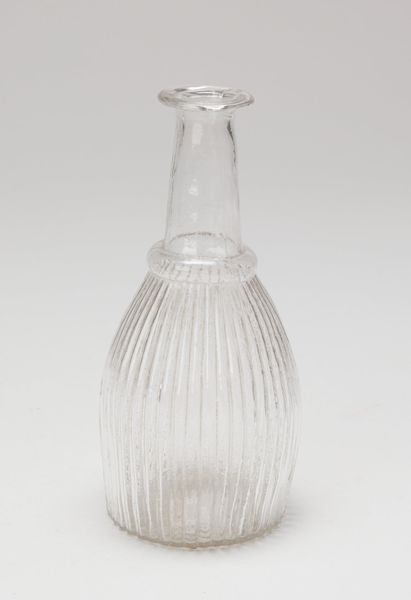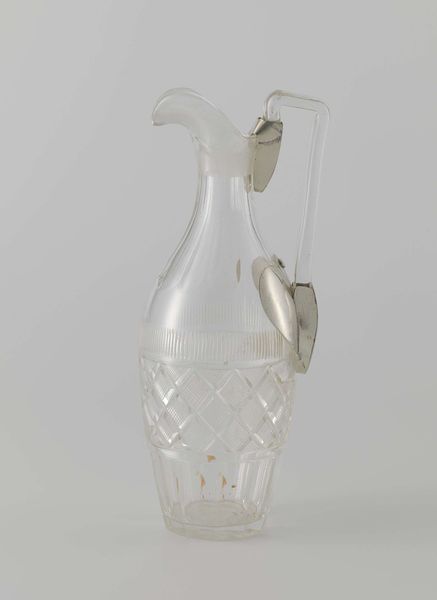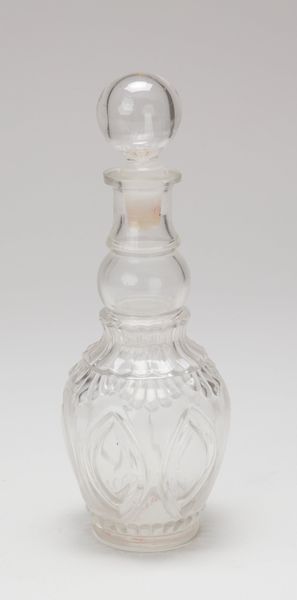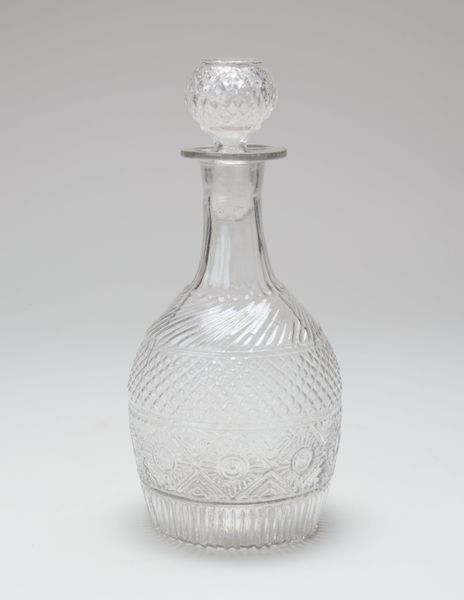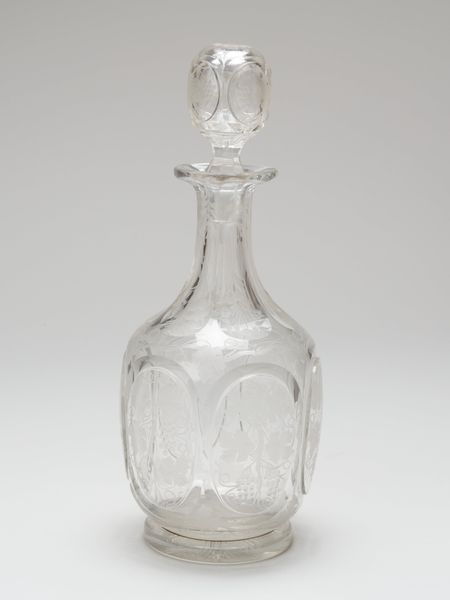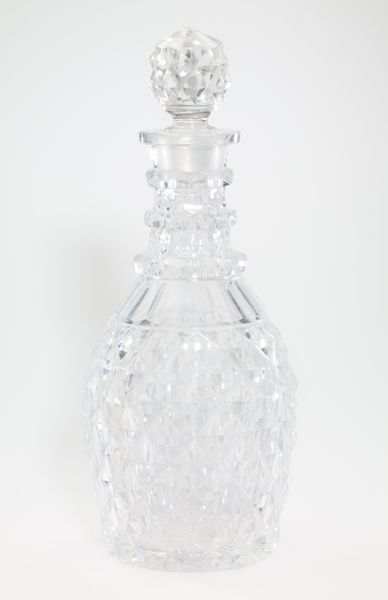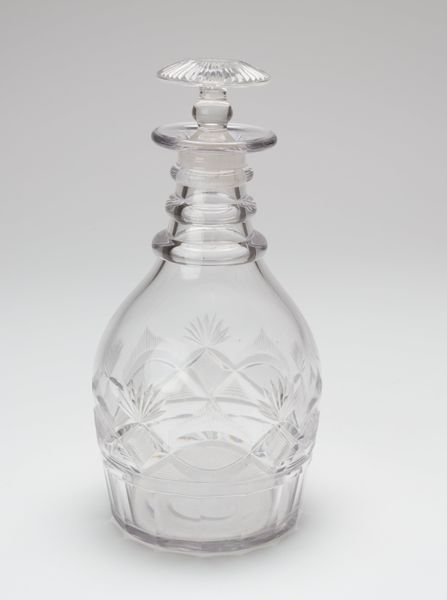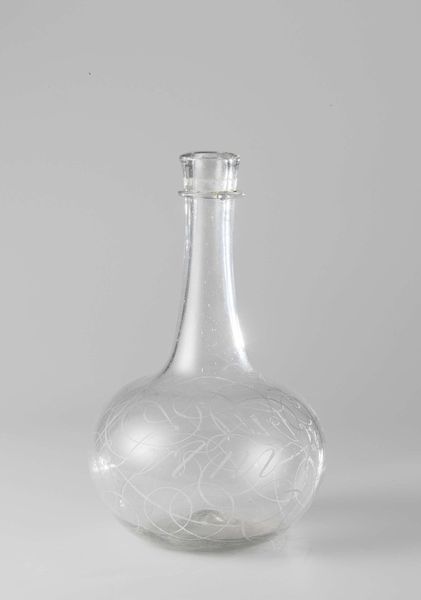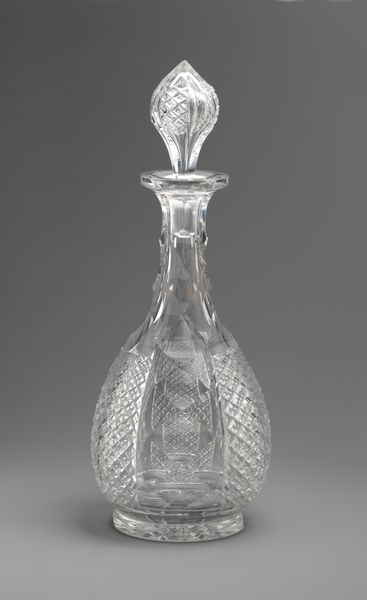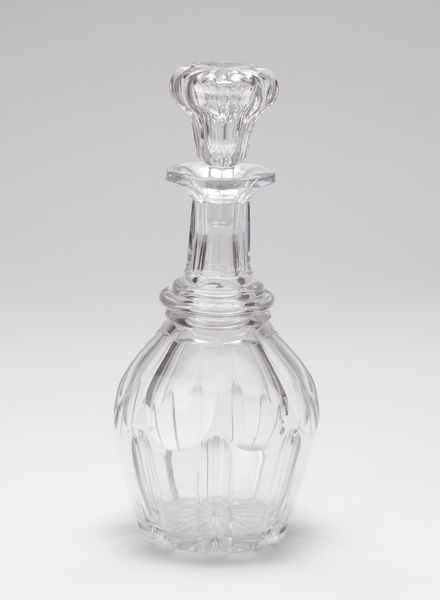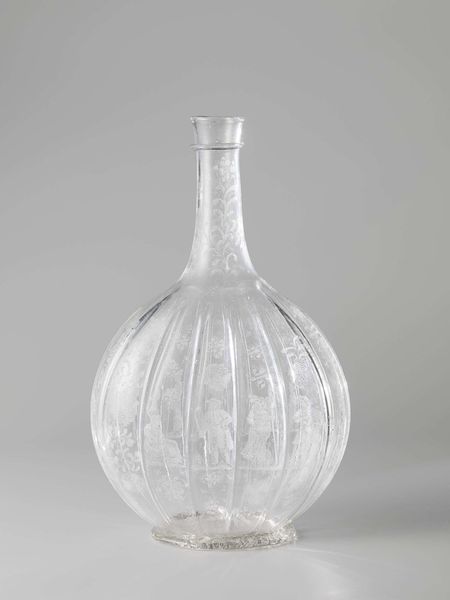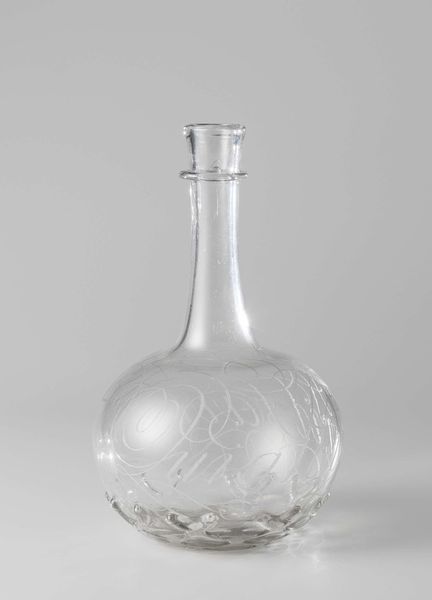
Stop van fles van olie- en azijnstel bestaande uit twee flessen van glas en een peperbus in een houder 1783
0:00
0:00
Dimensions: height 9.5 cm, diameter 2 cm
Copyright: Rijks Museum: Open Domain
Editor: This exquisite cruet-stand from 1783, holding oil and vinegar vessels and a pepper shaker, crafted by Jan Hendrik Middelhuysen... it's amazing how something so practical could also be such a dazzling ornamental object! It seems almost frozen in time. What resonates most with you when you view it? Curator: Ah, this isn't merely about function. This is about how we elevate the everyday. Consider: why display seasonings in crystal? Because to offer food, one offers sustenance but also civilization itself. The transparent glass invites inspection and, almost literally, displays purity and virtue. Notice the baroque influence? Do you see any relationship between dining culture and status? Editor: Absolutely, the opulence is palpable. But I wonder, if everything is pure and virtuous, where is the contrast? Does that constant aspiration to virtue diminish the everyday human experience somehow? Curator: A crucial question. Perhaps. Or, consider how this set might function symbolically: oil for anointing, vinegar for cleansing, pepper for zeal? What do you believe? It transforms mundane objects into symbols of both spiritual and earthly elevation and domestic stability. Editor: I didn't even consider that. Food service becomes almost sacramental. Curator: Precisely. Think about the modern ritual of a formal dinner and its rules: a symbolic performance of cultural belonging and memory enacted across generations. Editor: That reframes my entire understanding of dining. I'll definitely think of that ritual when I come across dining pieces now! Thanks for revealing the set’s many cultural nuances! Curator: The pleasure was all mine. There is always meaning to uncover if you look at ordinary objects with an eye open to symbolism.
Comments
No comments
Be the first to comment and join the conversation on the ultimate creative platform.
